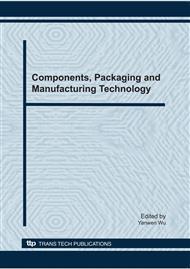p.388
p.394
p.398
p.404
p.409
p.414
p.420
p.428
p.433
Improved Apriori Algorithm Based on Compressing Transactional Matrix Multiplication
Abstract:
Apriori algorithm is one of the most classical algorithm in association rules, however, the algorithm is low efficiency, such as firstly it needs to repeatedly scan the database, which spends much in I/O. Secondly, it create a large number of 2- candidate itemsets during outputting frequent 2- itemsets. Thirdly, it doesn’t cancel the useless itemsets during outputting frequent k- itemsets. In the paper, it describes an improved algorithm based on the compressed matrices which improve the efficiency during creating frequent k- itemsets on three aspects, which simply scans the database once, after compressed transactional matrix, and by multiplied matrix get the frequent item sets, which effectively improved the efficiency in mining association rules.
Info:
Periodical:
Pages:
409-413
Citation:
Online since:
January 2011
Authors:
Price:
Сopyright:
© 2011 Trans Tech Publications Ltd. All Rights Reserved
Share:
Citation:


